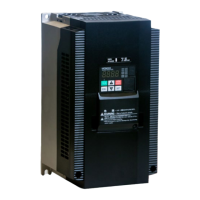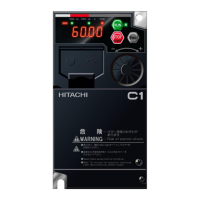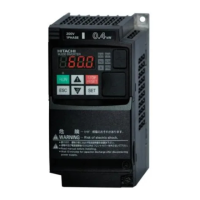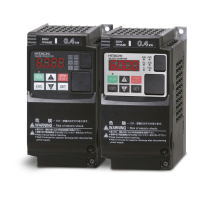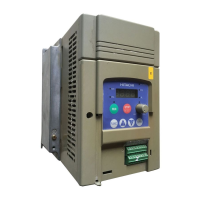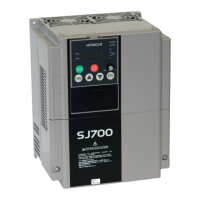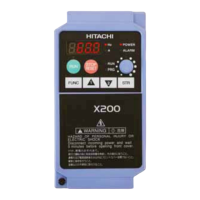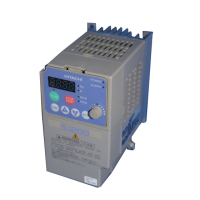34
Multi-Speed Select ~Binary Operation
The inverter can store up to 16 different target
frequencies (speeds) that the motor output uses for
steady-state run condition. These speeds are accessible
through programming four of the intelligent terminals as
binary-encoded inputs CF1 to CF4 per the table to the
right. These can be any of the six inputs, and in any
order. You can use fewer inputs if you need eight or
fewer speeds.
NOTE: When choosing a subset of speeds to use,
always start at the top of the table, and with the
least-significant bit: CF1, CF2, etc.
The example with eight speeds in the
figure below shows how input switches
configured for CF1–CF4 functions can
change the motor speed in real time.
NOTE: Speed 0 depends on
parameter value.
Multi-speed Select,
Bit 0 (LSB)
Binary encoded speed select, Bit 0, logical 1
Binary encoded speed select, Bit 0, logical 0
Multi-speed Select,
Bit 1
Binary encoded speed select, Bit 1, logical 1
Binary encoded speed select, Bit 1, logical 0
Multi-speed Select,
Bit 2
Binary encoded speed select, Bit 2, logical 1
Binary encoded speed select, Bit 2, logical 0
Multi-speed Select,
Bit 3 (MSB)
Binary encoded speed select, Bit 3, logical 1
Binary encoded speed select, Bit 3, logical 0
Example (some CF inputs require input
configuration; some are default inputs):
See I/O specs on page 23, 24.
, =,
to
Notes:
When programming the multi-speed settings, be
sure to press the SET key each time and then set
the next multi-speed setting. Note that when the
key is not pressed, no data will be set.
When a multi-speed setting more than 50Hz
(60Hz) is to be set, it is necessary to program the
maximum frequency high enough to allow
that speed
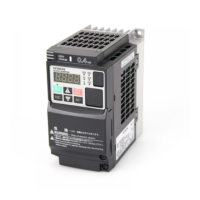
